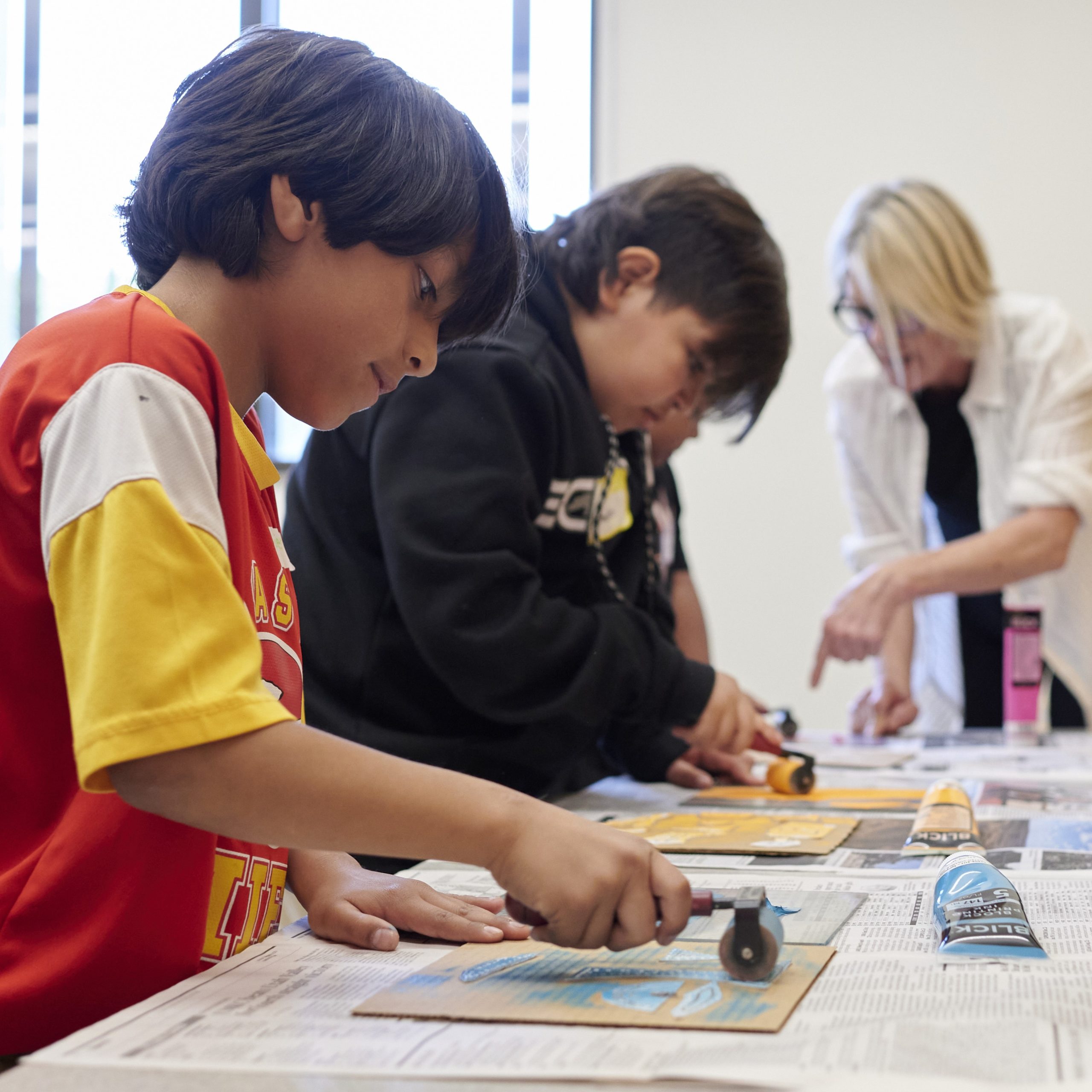
Personality Portraits
Supplemental resources
Workshop Overview
Available for Grades 5 and up.
Students explore realistic and abstract portraits in the galleries and discuss a variety of abstraction techniques. In the studio classroom students use a printmaking process to create an abstract portrait reflecting their personality. All supplies will be provided.
Outcomes
- Compare and contrast several types of portraits including realistic and abstract.
- Identify examples of exaggerating, simplifying, and distorting a subject to create an abstract work.
- Consider how a self-portrait might be exaggerated to represent aspects of personality.
- Create a collagraph plate and use it to pull a series of prints.
Curriculum
- Demonstrate openness in trying new ideas, materials, methods and approaches in making works of art and design.
- Analyze components in a piece of art that convey messages or meaning
- Compare one’s interpretation of works of art with the interpretation of others
Vocabulary
- Portrait – An image or portrayal of a person
- Abstract Art – Art that does not attempt to represent external reality
- Exaggeration – Making something larger or more noticeable.
- Simplification – Making something less complicated.
- Distortion – Changing the size, shape, or original character by the artist to convey a feeling or create visual interest.
- Collagraph – A printmaking process in which materials are glued to a printing plate
- Personality Traits – Characteristics and qualities that define a person as a unique individual; i.e., brave, quiet/loud, open-minded, generous, helpful.
- Facial Features – The details or parts that make up the face (eyes, ears, nose, mouth, eyebrows, etc.)
Pre-Workshop Activities
- Look at a variety of portraits in the Nelson-Atkins collection – https://art.stag.nelson-atkins.org/advancedsearch. Discuss the various ways people are portrayed in art. Why did the artist choose the colors, pose, and props in the portrait? Do they tell us about the subject of the artwork?
- Ask students to consider how they would like to be represented in a portrait. Which of their features are their favorite? How do their friends recognize them?
- Explore printmaking. Show examples of a newspaper, a flyer, a book, a poster, or label, etc. What are some other items that use this process? How is printmaking different from other forms of art making?
- Create handprints on a single piece of paper or on a longer piece of roll paper. What do you have to do to make the print? Your hand is the same thing as the block in the process. Can you see what happens when the person makes the print too quickly? Uses too much paint? Moves the hand while still on the paper?
Post-Workshop Activities
- Prompt students to write about their work, including the choices they made to illustrate the traits or qualities of their personalities they wanted to emphasize.
- Try some more abstraction! Choose one subject and ask students draw it with exaggeration, simplification, and distortion. How else could they alter the image to make it more abstract?
- Discuss what an “edition” is and how artists make more than one print. Find a print that has the edition and print number on the bottom. Have students write the edition number/print number on the bottom of their own print. For example: 3/45 would be the third print out of an edition of 45.
- Look at the work of various printmakers: Andy Warhol, Robert Rauschenberg, Albrecht Durer, etc. When did they create art? What was their subject matter? How are they the same? Different?